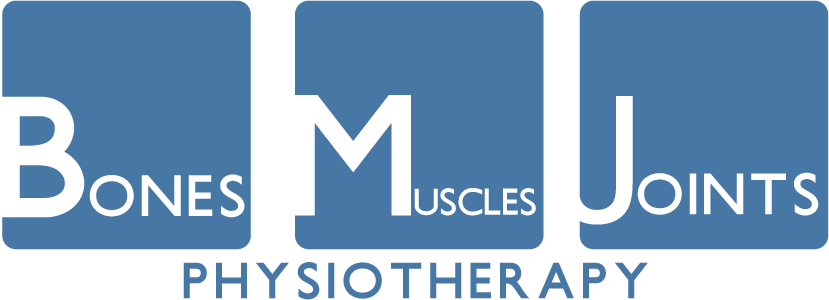Massages in Singapore, does it really help?
Singaporeans often have aches and pains. Some are caused by their jobs, while accidents, lousy posture, busy lives, and unhealthy habits cause others.
Not knowing the best options, many turn to regular massages. In Singapore, massage is one of the most popular ways to pass the time and unwind. Many even flock across the causeway to JB or jet off to Thailand and Indonesia for long massage sessions. Types of massages include Swedish massage, aromatherapy massage, hot stone massage, tuina or deep tissue massage, Japanese shiatsu massage, and foot reflexology. Each massage session lasts 60 to 90 minutes and costs between $120 and $200. The most popular forms of massage in Singapore are deep tissue, relaxing, and foot reflexology.

People who suffer from such occupational pains go to massages regularly to find a solution for their aches and pains, and most of the time, they do not see it after spending a lot of money. They feel some relief for a few days, but some people suffer the after-effects of the aches after “deep kneading” on top of their uncomfortable state. A scientific way to handle occupational pain will be physiotherapy, or physical therapy, better known by its Chinese name, 物理治疗
Deep-tissue massage is not the most enjoyable form of massage. The usual Chinese therapist kneads slowly and applies deep finger pressure to release tension from the deep layers of your muscles and connective tissues. It is easy to see that people flocking to deep tissue massages are looking for a solution—relief from their nagging aches and pains, especially occupational pain. What is occupational pain? Occupational pain can occur in various professions and occupations, typically due to repetitive strain or overuse of particular muscles or joints.
Some occupational Pain only get short term relief with massages in Singapore
Some examples of occupations that may be particularly prone to occupational pain include:
1. Manual labour Jobs, such as those performed by construction workers, factory workers, or warehouse workers, may require lifting heavy objects or performing repetitive motions.
2. People in health care, like nurses and caregivers, may have to lift and move patients, stand for long periods, and do the same tasks repeatedly.
3. Office workers who spend long hours sitting in front of a computer screen or performing tasks with their hands and arms, such as typing or using a mouse.
4. Professional athletes and dancers who use specific muscles or joints too much may have long-term pain.
5. Holding and playing instruments for long periods can hurt and hurt musicians.
6. Hair stylists who spend long hours standing while working with hair styling tools suffer pain in their hands, especially the right thumb, lower back, and feet.

How can physiotherapy help in a way that massage in Singapore cannot?
Individuals in these professions can prevent occupational pain and injury by practising proper ergonomics, taking breaks, and exercising regularly. Physiotherapy and massage in Singapore are both forms of manual therapy that can be beneficial for treating pain and injuries, but they differ in their approach and goals. The effects of massage wear off after a few days, whereas physiotherapy is a form of professional healthcare that optimises movement and function to improve quality of life. Massage in Singapore is a manual therapy primarily focusing on relaxing muscles, reducing tension, and improving circulation. Massage therapists use Swedish, deep tissue, and trigger point therapy to manipulate soft tissues and improve blood circulation. While physiotherapy and massage in Singapore can effectively treat pain and injuries, physiotherapy offers a more comprehensive approach.
Physiotherapists use various techniques and modalities to assess, diagnose, and treat musculoskeletal conditions and injuries. They work with patients to develop individual treatment plans, including:
1. Exercise prescription
These exercises target tight, weak, or painful muscle regions. These exercises stretch and strengthen tight or weak muscles. In addition, physiotherapist-recommended exercises help restore body mobility.
2. Manual Therapy
Manual therapy is hands-on physiotherapy, mobilising muscles, tendons, and fascia to improve blood flow, relax muscles, and reduce discomfort. Stimulating mechanoreceptors also reduce pain.
3. Education
Internet access on mobile and computers makes information easily accessible. However, too much or wrong information may overload people with irrelevant information. A physiotherapist can accurately advise and tailor specific recovery processes to relieve musculoskeletal discomfort.
4. Lifestyle change
Most musculoskeletal pains are treatable, but poor lifestyle choices cause many. To help you recover, the physiotherapist may recommend lifestyle changes, including an exercise program, home environment changes, and mobility assistance.

Physiotherapists use therapeutic modalities such as
· Electrical therapy – Using electrical current to relieve pain or activate muscles. Adhesive pads at specified parts of the body transfer electricity from the device to the body. Electrical therapies, including TENS, NMES, and FES may speed up recuperation.
· Ultrasound – Piezo-electric crystals in a probe applicator would vibrate at extremely high frequencies when electricity ran through them. The sound waves target tissues that generate micro-circulation to improve nutrition flow to the targeted area. The applicator head may warm up in acute and chronic illnesses to provide relief.
· Heat/Cold Treatment – Pain is relieved by a warm or cold pack. Warm therapy improves blood circulation and relaxes muscles, whereas cold therapy reduces inflammation, discomfort, and swelling in acute injuries. This therapy provides comforting relief quickly.
· Taping – K-taping or kinesio-taping includes applying stiff or flexible fabric tape to the affected body parts. The tape is not for support but gives the body feedback on bad body moves. The tape may be used for days and endure regular showers.
· Dry Needling—often confused with Traditional Chinese Medicine (TCM) acupuncture—has a distinct objective and therapeutic path. To stimulate muscles, sterile needles are precisely placed into myofascial trigger points. The goal is to make the damaged muscles twitch, enhance blood flow, and reduce discomfort.
Physiotherapists are trained to identify and treat the root cause of a problem rather than just addressing symptoms to help patients achieve long-term pain relief and functional improvement.
Should I see a physiotherapist instead of going for a massage in Singapore?
It can be hard to decide whether to go to a physiotherapist or a massage therapist because both offer manual therapy techniques that can help with pain and improve physical function. However, some key differences between the two professions may help you determine which type of therapy is best for your needs. Here are some reasons why you may want to consider seeing a physiotherapist instead of a massage therapist:
1. An injury or illness affects your bones, muscles, or joints. It could be a sprained ankle, post-accident recovery, slipped disc or suffering from any form of occupational pain. Therefore, you may benefit from visiting a physiotherapy clinic than a leisure spa. Physiotherapists are trained to diagnose and treat various musculoskeletal conditions and injuries and can develop customised treatment plans to help you recover and regain function.
2. You want to improve your physical function: If you have a goal of improving your physical function, such as improving your balance, increasing your strength, or improving your flexibility, a physiotherapist can help. Physiotherapists create exercise programmes tailored to your specific needs and goals and provide guidance and support to help you achieve your goals.
3. You are seeking long-term pain relief: If you are seeking long-term pain relief, a physiotherapist can help identify and treat the root cause of your pain rather than just addressing the symptoms. Physiotherapists can use a range of therapeutic modalities, such as manual therapy, exercise, and modalities like heat or cold therapy, to help alleviate pain and improve function. You want to prevent future injuries. If you are looking to avoid future injuries, a physiotherapist can help. Physiotherapists can assess your posture, movement patterns, and musculoskeletal health to identify potential areas of weakness or imbalance. They can develop exercise programmes with combined therapy to help you improve your overall physical function and reduce the risk of injury.
4. You are a sportsperson that wishes to perform better while avoiding injury. Physiotherapy helps sportspersons perform better and prevent injuries by identifying risks, providing tailored strength and conditioning programs, rehabilitating injuries, and enhancing overall performance.
In Singapore, there is this misconception that physiotherapy is only for severe cases such as car accidents and stroke recovery or that doctors must refer the patient to it. Physiotherapy care is now widely available, and you can make an appointment to see a physiotherapist. Physiotherapy is the best form of therapy that Orthopaedic surgeons and the Ministry of Health in Singapore endorse. They recommend physiotherapy as the practical and scientific way to healthy bones, muscles, and joints. In addition, it is easy to get and works well for work-related aches and pains.



